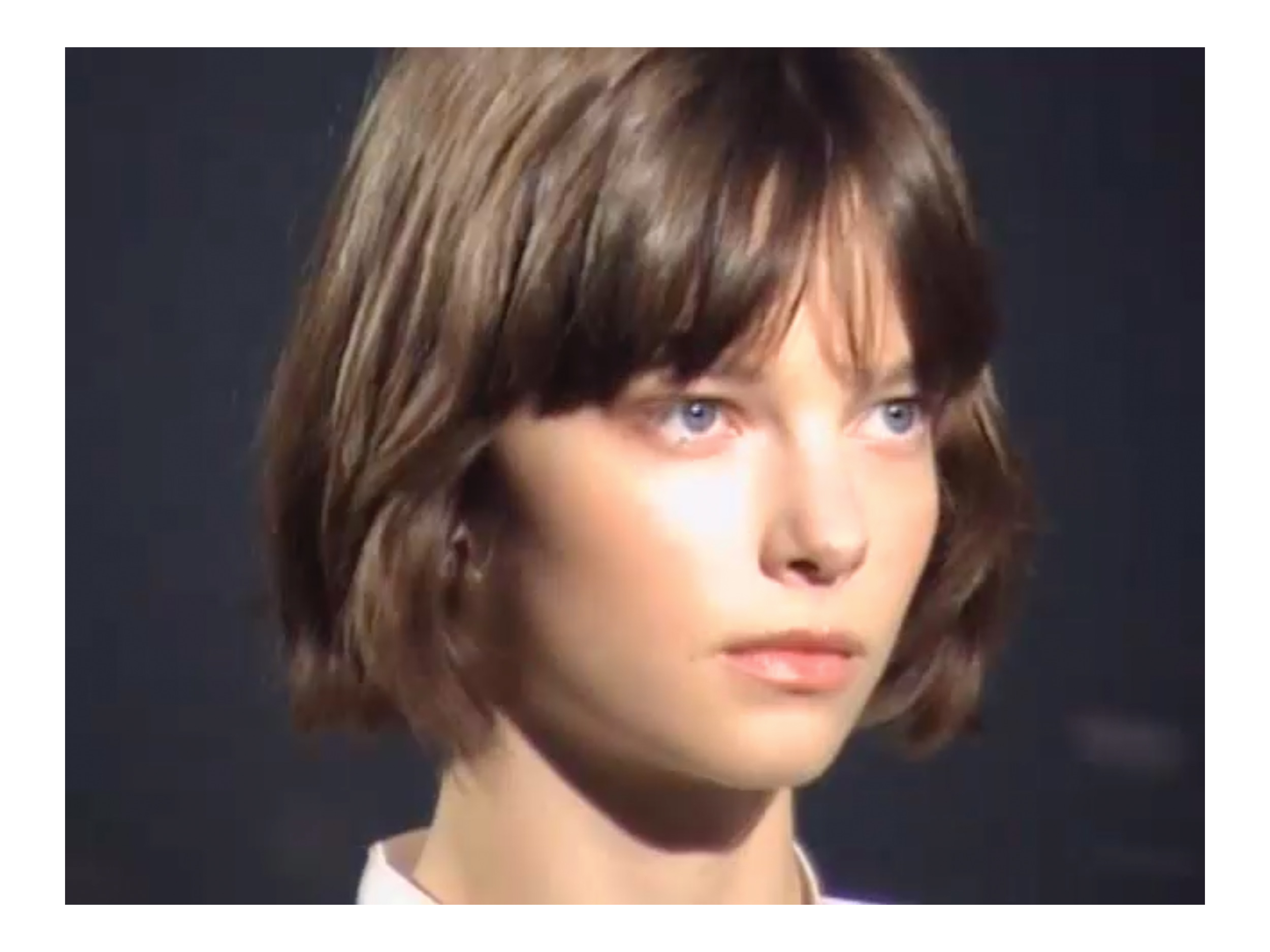In a tribute to the brand’s late founder, Satoshi Kondo melded Miyake’s philosophy with his own to create a collection centered in a freedom of movement
“I believe there is hope in design. Design evokes surprise and joy in people.”
The quote from Issey Miyake was projected in cursive, along with a black-and-white portrait of the late designer with a subtle smirk on his face, his hand resting on his cheek. It surrounded the walls of the Paris Event Center, the venue of the house’s Spring/Summer 2023 show, in memory of the iconic Japanese designer, who passed away last August at age 84.
One of fashion’s most legendary figures, Miyake was known just as much for his innovation in tech, art, and design as he was for his aesthetic sensibility. Miyake’s designs captivated a range of admirers from different disciplines, like Ingrid Sischy—the former editor-in-chief of Artforum—and Apple co-founder Steve Jobs, for whom he created his signature black turtlenecks. His close ties to the art world moved Sischy to put one of his dresses on the cover of the magazine’s February 1982 issue: one consisting of a rattan bodice and nylon polyester skirt from his Spring/Summer 1982 collection, which was created with bamboo artist Kosuge Shochikudo. It was the first time a fashion designer made the cover of the prestigious art magazine.
Miyake discovered fashion in the pages of his sister’s magazines, prompting him to enter a competition at Bunka College after he graduated from Tama Art University in Tokyo. Although Miyake didn’t win any prizes, he wasn’t deterred from pursuing fashion. He enrolled in the Chambre Syndicale de la Couture Parisienne, apprenticing for Guy Laroche. He also worked with couturier Hubert de Givenchy. After his stint in Paris, Miyake headed to New York to take English classes. The designer socialized with artists like Robert Rauschenberg and Christo while working for Geoffrey Beene.
He established Miyake Design Studio in Japan in 1970. The following year, the brand held its first international show in New York, before setting out for Paris in 1973, where it continues to show during Paris Fashion Week to this day. While Miyake’s designs were informed by the likes of artist and designer Isamu Noguchi, couturière Madeleine Vionnet, and artists Alberto Giacometti and Constantin Brâncuși, he quickly developed a language all his own—an amalgamation of fashion, art, innovation, and design.
People who wanted form and function in their clothing gravitated to Miyake’s garments, primarily for their sculptural nature, comfort, and style. Art-world women carried his Bao Bao Issey Miyake bags, signaling that they knew both fashion and design, with an awareness that only those in the know recognized the designer’s name. His Pleats Please line—the signature micropleats he’s perhaps best known for—first appeared in his namesake collection in 1988 before becoming their own brand for Spring/Summer 2003, drawing a loyal following from those who wanted something tasteful and easy to wear, yet beautifully designed.
Miyake also took risks, celebrating Black women early on by championing a dozen Black models, including Grace Jones, in Issey Miyake and 12 Black Girls—a presentation produced by model Bethann Hardison that showcased Miyake’s Spring/Summer 1976 collection in Tokyo and Osaka for a month. “At the time, having just one Black model in a runway show was rare and still considered taboo, but Bethann Hardison helped Issey Miyake produce what seemed to be daring and nearly impossible,” reads Hardison’s website.
Miyake stepped away from fashion design in 1994, when he handed the reins of his men’s collection to Naoki Takizawa. Four years later, Miyake debuted A-POC, another line that allowed its wearers to play a part in designing their clothing through garments that one could sculpt to their liking. In 1999, he appointed Takizara to head his women’s collection so that he could focus on research. In 2007, Takizara started his own brand under the House of Issey Miyake, leaving Dai Fujiwara to serve as creative director until 2012. Satoshi Kondo currently heads up the house.
Kondo and the design team left a moving tribute to Miyake through a notecard on every seat embossed with the words:
“We see design as a process driven by curiosity,
built upon a comprehensive exploration—
bringing joy, wonder, and hope to life,
and of course with a touch of playfulness.”
That idea was imbued within the Issey Miyake Spring/Summer 2023 collection. Kondo beautifully melded Miyake’s philosophy with his own, resulting in a collection that encouraged movement, freedom, art, and design—things they both valued. Pleated knitwear in a series of colors that evoked an airy lightness remained true to the Miyake sensibility.
Kondo and his team even stay true to Miyake’s dedication to innovation through, as Luke Leitch wrote for Vogue.com, “a circularly-pleated polyester that was 100 percent plant-based and created by a Miyake partner named Toray Industries Inc.” Now if that’s actual polyester made without fossil fuels, that’s something fashion should be celebrating and adopting. Why isn’t this all over social media?
The show was executed as a tribute to Miyake, and as the first collection giving way to the new Issey Miyake, with an exquisite symphony of fashion, lighting, live music by Koki Nakano, and a joyful finale featuring a dance choreographed by I COULD NEVER BE A DANCER, which surprised the audience with models and dancers leaping and jetéing off the runway. Miyake may have passed away, but the philosophies instilled in his namesake brand will most certainly continue to live on.















